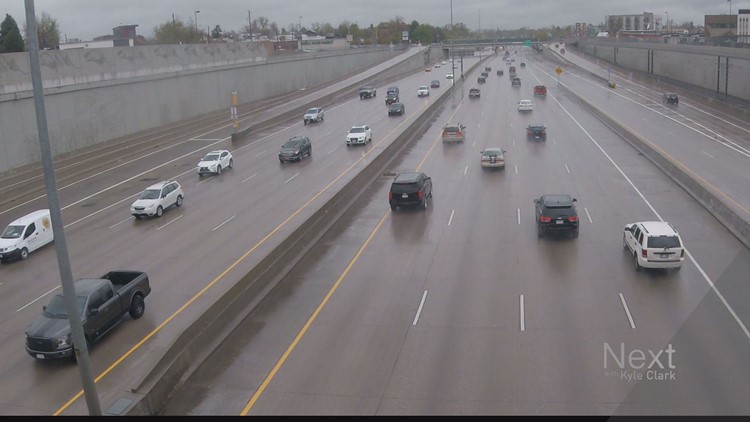DENVER — We found out this week that when the rain falls, drivers become experts in road technology.
Seeing the lane lines in the rain is a universal problem, not just in the metro area.
After showing you some hard-to-see lines on I-25 and C-470 on Wednesday, we heard from viewers who suggested taking a page out of another state's transportation book.
We reached out to those states to see what they do and also took your suggestions to the Colorado Department of Transportation.
First, we got a brief science class on why CDOT uses the lane striping it does.
The lines that stripe the side of the roadway -- that keeps you from hitting the barriers -- are an epoxy with a mix of ground glass sprayed on top.

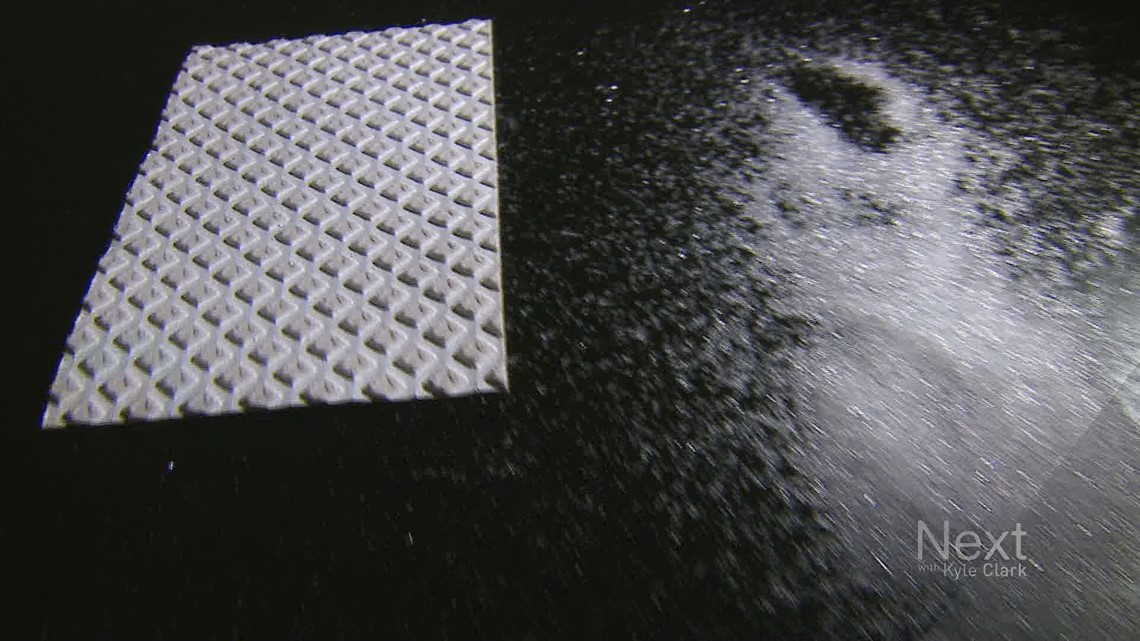
"They're bigger beads, so with bigger beads, more light's able to come in, more light's able to come out," said CDOT Project Engineer Steve Chevalier.
On highways that get less traffic than I-25, CDOT uses that type of striping in between lanes. But on the highways through the metro area, CDOT uses a reflective tape dug one-eighth of an inch into the roadway.

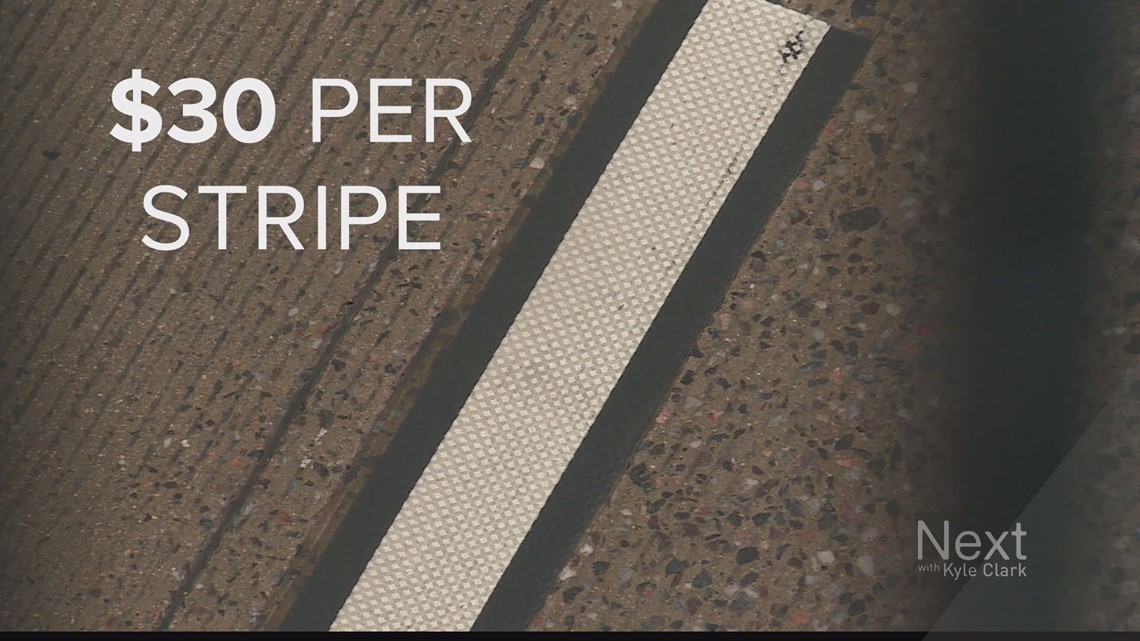
"There (are) channels within the product for water to travel," said Chevalier. "What happens when it rains, water will set and pool and when water gets on it, light diffusion, all of that happens, it's not able to do its job."
So, could something do better?
NEXT Viewers seem to think so.
We heard from Ralph, who wanted to know about reflectors secured above the roadway next to the lane lines, known as "raised pavement markers."

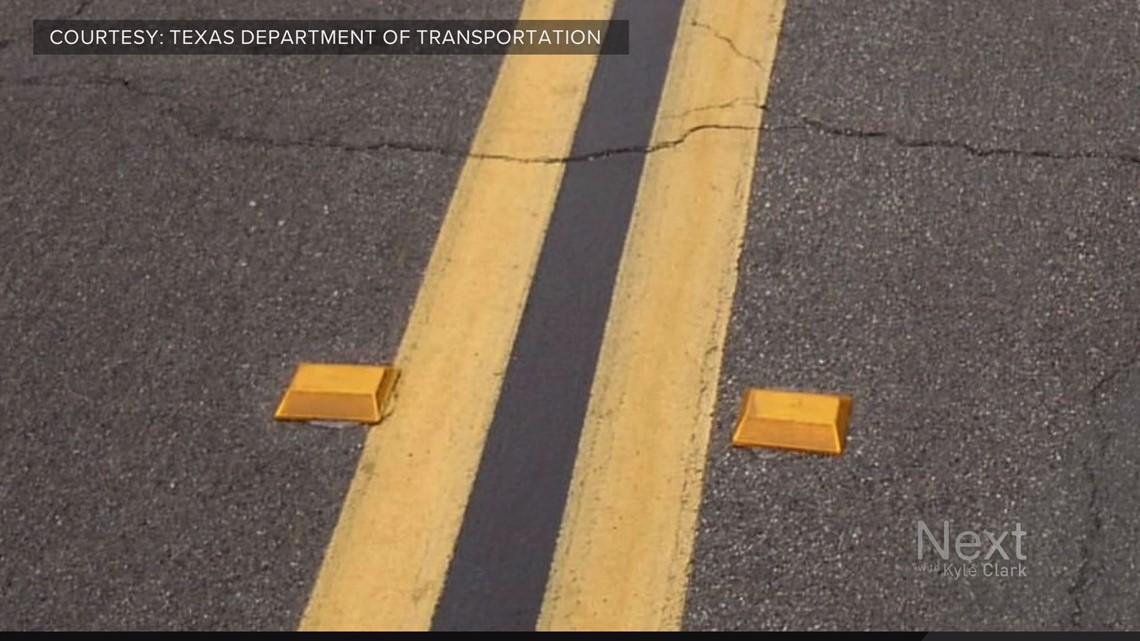
"If a plow comes, it can pluck it out and make it into a projectile," said Chevalier. "Anything mounted to the surface, it just doesn't hold up to steel carbide. Your plows are steel carbide."
The Texas Department of Transportation uses that type of reflector.
"A raised pavement marker is a safety device used on roads along with striping. These devices are usually made with plastic, ceramic, thermoplastic paint or occasionally metal, and come in a variety of shapes and colors. Raised reflective markers include a lens or sheeting that enhances their visibility by retro-reflecting automotive headlights."
David emailed us asking about snowplowable lane reflectors, the type that can survive a snowplow.

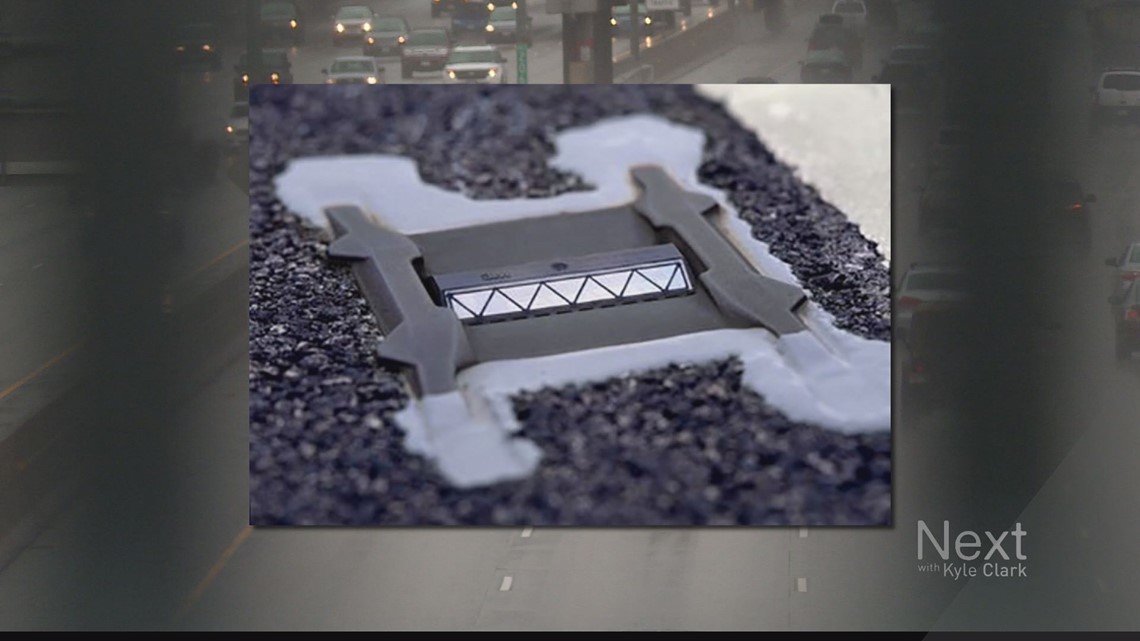
"It's snowplowable because it's steel, so it can withstand the hits. But what happens, the freeze-thaw cracking, and if it pops out, now you've got a seven-pound, I believe, projectile possibly going into somebody's windshield," said Chevalier.
Scott and Bruce smartly suggested the Washington Department of Transportation would have the solution because, you know, rain.
Here's what Washington's DOT told us:
"For water on the roadway, there are two concerns, reflective bead visibly if they’re completely underwater as well as when you’re recovering from a full rain with water on the roadway but not enough to fully cover the beads. We use a couple of different bead products to try to address both concerns and we use them in areas where we judge they’ll be most effective based on a number of factors such as crash history, geography, volume and average weather. These specialty beads are more expensive so we also must balance benefit versus cost when making determinations.
Other approaches include raised pavement markers, commonly referred to as RPMs, which are plastic, ceramic or metal reflective squares added to the pavement along the stripe line. Some of these RPMs are vulnerable to snowplows and on our mountain passes need to be replaced somewhat regularly in these climatic conditions to provide positive guidance. Others can be recessed a bit to try and increase their life span.
In addition, our roads have a slight slant to try and prevent water from pooling within lanes. As pavement is worn down, though, ruts develop which can work against that and cover striping and RPMs with pooled water, so keeping pavements in a condition of good repair also aids in visibility (among other things).
And, while not a product or technology, asking drivers to slow down, and make sure their windshield wipers and headlights are in good working order also is another approach we take through social media and interviews. It’s one part of many, as noted above, but every bit helps."
Kathy lived in Vermont for 16 years and thought the Department of Transportation there had it figured out. It turns out the state in existence since 1791 uses similar technology as Colorado.
Here is Vermont DOT's response:
"On State maintained roads, we utilize a few different marking materials (epoxy paint, polyurea pavement markings, pavement marking tape and waterborne paint) and some of the markings installed are recessed. However, the majority of our system is marked annually with waterborne paint. We still have challenges with retro reflectivity at night and in poor weather conditions."
On I-70 in the mountains and on Highway 93 between Golden and Boulder, CDOT uses solar-powered LED reflectors.
"They are very expensive," said Chevalier.
At $250 each, CDOT would have to use three LED reflectors to replace one lane stripe. The lane stripe costs $30 each. Here's some quick math. Over the course of one lane mile, CDOT places stripes every 40 feet. That means there are 132 stripes in each lane mile. At $30 each, that's almost $4,000. Replacing those with LED reflectors would cost almost $100,000.
"This is by far the best we can do with the constraints of our budget that we have," said Chevalier. "(The lane stripe) will make it six-to-eight years on an I-25. You go out to rural Colorado, it lasts even longer. We try to balance longevity, durability and performance."


